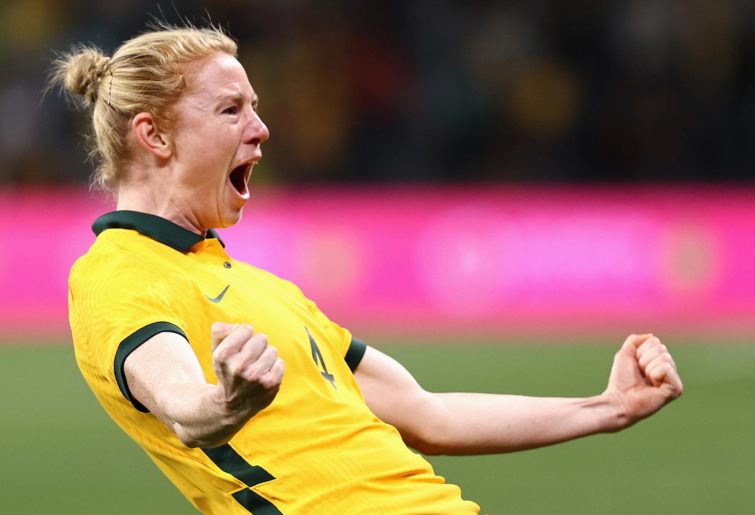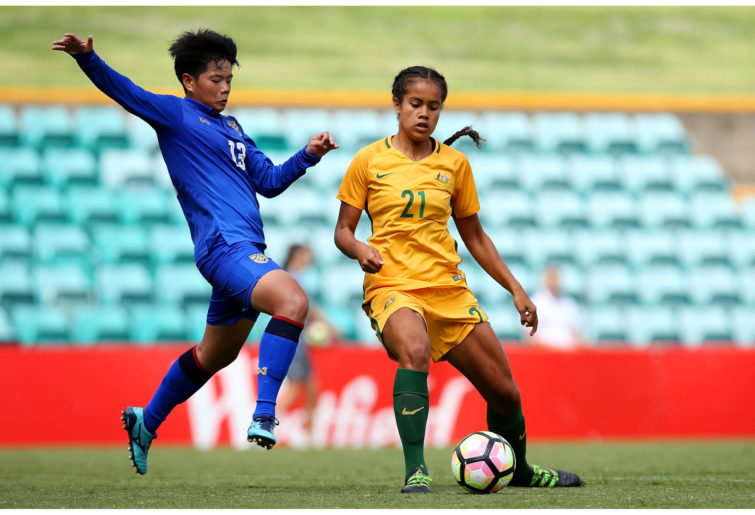While short-term pain for long-term gain is the philosophy Matildas coach Tony Gustavsson is adopting, some Australian fans are not prepared to wait.
Australia’s record since he took over looks ugly when viewed in isolation. Only two wins in regulation time out of 16 games – a third in extra time against Great Britain at the Olympics – and a whopping 37 goals conceded.
To be fair to Gustavsson though, he inherited a team – or rather a system – that was far from where it needed to be.
The Women’s Performance Gap Report commissioned by Football Australia last year identified that Australia, at the time, had only 27 ‘fringe’ players available for national team selection compared to an average of 38 for the 11 other countries studied. These countries included powerhouses USA, England, Holland and Japan.
Of those 27, only 18 players will be aged between 22 and 31 – considered to be the ‘peak performance age’ – by the time the 2023 World Cup arrives on our shores.
Australia had, at the time of the report, only handed out eight international debuts over a four-year period. Karly Røestbakken and Jenna McCormick were the only two of that eight to have played more than 200 minutes for the senior Matildas.
Gustavsson has already fixed this, handing out 14 debuts since he took over earlier this year.
The likes of Courtney Nevin, Kyra Cooney-Cross, Alex Huynh, Remy Siemsen, Charlotte Grant, Bryleeh Henry, Dylan Holmes, Indiah-Paige Riley, Beatrice Goad, Clare Wheeler, Teagan Micah, Bryleeh Henry, Angela Beard and Jessika Nash have all been capped this year.
While our defence has been shaky against the US, having inexperienced teenagers like Nevin and Nash at centre back in the opening game, and then Nevin again in Tuesday night’s second match raises questions.
Why doesn’t Australia have more natural centre-backs ready to take over from Alanna Kennedy and Clare Polkinghorne? They are specialist roles and arguably the most important in any team.

Clare Polkinghorne scores (Photo by Cameron Spencer/Getty Images)
Nevin is a left back/winger and played that role well for the Western Sydney Wanderers. Why was Gustavsson forced to throw her into an unfamiliar role in a game against the best team in the world?
What has made life even more challenging is Australia has failed to qualify for the last seven Youth World Cups at Under 17s or Under 20s level. The last time we made a Youth World Cup was in 2006.
At the last Asian Under-19 Championships, in November 2019 – the qualifying tournament for the Under 20s World Cup – Australia conceded 21 goals to South Korea (9-1 loss), North Korea (5-1) and Japan (7-0) as they came fourth.
This has meant our young players have been starved of any form of competitive international football, and when they did get the opportunity, were comprehensively beaten.
The consequences of this can be seen now where our younger players, who have now been given senior minutes, are struggling as they find their feet and catch their breath in senior international football.
None of this is Gustavsson’s fault. He has two years to fix the lack of experience among our younger or fringe players at the highest level. To be fair, he has put the building blocks in place, and he should only be judged in 2023.
Another major issue that was highlighted in the report was the lack of minutes in club football for Australian players compared to their international counterparts.
While superstars like Sam Kerr and Ellie Carpenter, and established players like Alanna Kennedy, Caitlin Foord, Hayley Raso and Mary Fowler play full-time in the UK and Europe, our fringe or less experienced international players are still in the part-time A-League Women’s competition.

Mary Fowler for the Young Matildas in 2018. (Photo by Jason McCawley/Getty Images).
The A-League, up until the 2020-21 season, had only 12 regular season games and two finals.
The report found that a player in Australia’s domestic league structure – with a maximum of 14 games on offer – allows for just 113,444 match minutes, compared to the case study league average of 291,660 minutes. This is a 61 per cent shortfall for our players compared to the best.
As a comparison, a footballer at a top-flight club in Spain had the opportunity to play three times as many top-level games as an A-League player.
Gustavsson has essentially walked into a system that makes it extremely challenging to compete. He has to firstly fix what is broken, easier said than done, before building a team that can lift the games most prestigious trophy.
The Asian Cup is Australia’s next big challenge, in January in India. The Matildas should make it through a relatively easy group phase against Thailand, Phillipines and Indonesia. When the knockout stages come, that is where the challenge will be.
It’s easy to blame Gustavsson based on results so far, but he should be judged on what happens in 2023.































































































